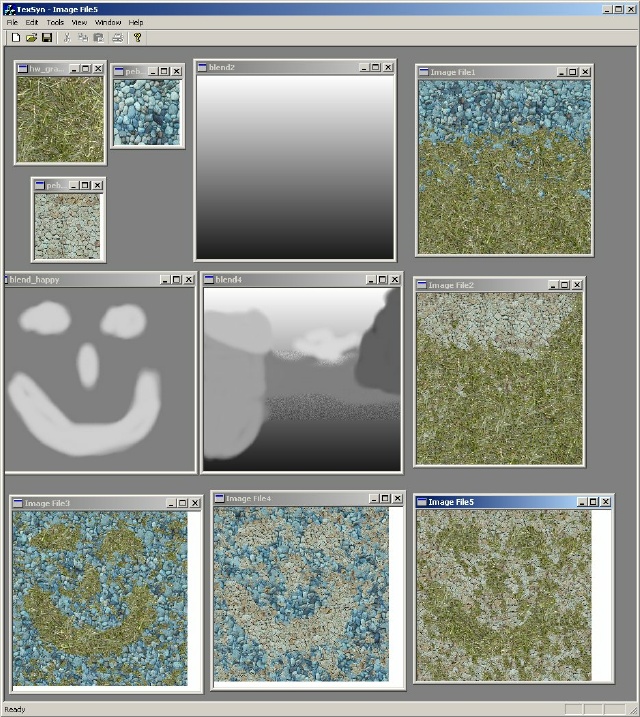 |

Submitted by , posted on 05 June 2001
|
 |

Image Description, by

This is a screenshot of a small C++ app I wrote for a final project over at
Johns Hopkins University. Its a demonstration of texture synthesis given source
images (The 3 small images in the upper left) and a "blend" image (The grayscale
images in the center column). The algorithm I used for synthesis is based on
the paper "Synthesizing Natural Textures" by Michael Ashikhmin
(http://www.cs.utah.edu/~michael/ts/) . Whereas the original algorithm allowed
for only one source image, the modifications allow for 2 independent source
images to be used in texture syntehsis.
Here's the genearl idea of the algorithm. The output texture is created in scan
line order left to right, top to bottom. At each destination pixel in the
output texture the algorithm looks at its surrounding neighborhood of pixels and
computes the best match (L2 norm) from each source. So it computes 2 norms for
each pixel, one from source 1 and one from source 2. Typically the one with the
lowest norm would be placed at the destination pixel. However, we have the
blend image.
The blend image is something like a weighting between the norms. 0 (black)
represents 100% source 1, 0% source 2 and 255 (white) represents the inverse.
As the blending comes closer to 128 the weighting becomes 50/50. The blend
image is how we can influence what the output texture looks like, as seen in the
happy face.
The interface to this sucker is really rough. Its a barebones MFC app with some
functionality to read/write PPM files and of course to generate the texture.
The results are decent, but could do a little better. The main difficulty seem
to be getting the source images to look right toghether on the output texture.
Also very important is to have a believable blend. For some reason I don't
imagine happy faces occuring in nature =)
|
|

